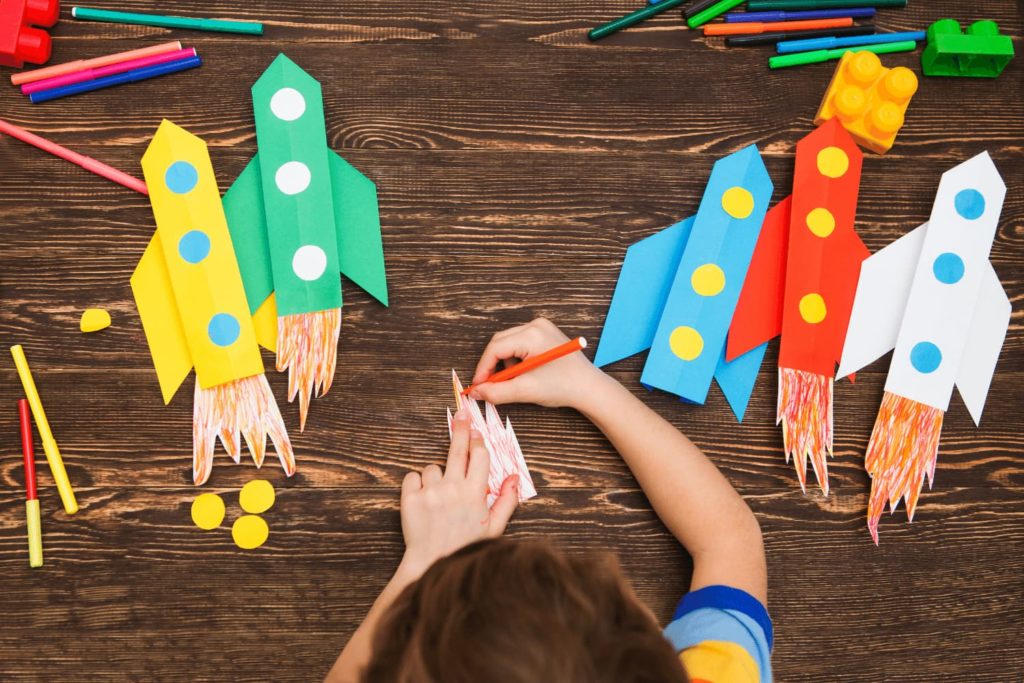
My Creative Journey
Because the human condition is imaginative by nature, we are all on a creative journey. Some people never get off the creative path; some get sidetracked early; some lose the trail completely, but eventually pick it up again. In this piece, I explain my own creative journey in the hope that reading about my path might help you understand your own. If you have lost your creative direction, like I did, I hope that this post might help you find your way back to your own imaginative genius.
Creativity as We Grow
What do you want to be when you grow up? My first answer to that question was to be an artist. I loved to make pictures with anything and everything, as long as it was colorful: paints, crayons, markers, colored pencils, colored paper, and even scraps of yarn. That was my first creative love, but not my only one. The other creative passion of my childhood was what I called “storymaking.” I didn’t write the stories down or tell them to anyone, so I didn’t think I could call it storytelling. I was constantly making up stories, however, which were often acted out by my childhood action figures (either Star Wars or He-Man). I made pictures and stories naturally as kid, and maybe you did, too. Or maybe you did other creative activities like making up games or acting out skits. Chances are good that your childhood self was amazingly creative.

As a young child, the adults in my life let me indulge in creative play, and maybe your adults did, too. For most children, however, there comes a point when this changes, and for me it happened around third grade. Skill building started to take all the time away from creative endeavors. It was determined that I was “smart,” and so I was encouraged to devote more and more time to studying. This happened to many of my classmates, but in different areas. For some it was sports; for others it was music. I grew up in a rural community, and for some kids, the emphasis was on developing the skills for working on the farm. For me and many other children, the more time that was dedicated to skills, the less time was available for creativity.
This continued throughout high school and college. I was good at math and science, but also loved music and public speaking, and I was lucky enough to be able to pursue all of those areas. But very rarely was I encouraged to be creative. I tried on a variety of fields of study throughout college, and finally found a passion for a particular historical period: the Middle Ages captured my imagination like no other subject. I began to specialize in Medieval Studies, but as I was building my skills in that area, there was very little room for my creativity.
Creativity...Lost and Found
I would eventually become a professor of medieval Spanish literature, and I put my skills to work in that area. I did exercise creativity in my teaching and my research, but it wasn’t really in the realms of my native creativity: my story-making and visual expression through color. After talking to many people about their jobs and creativity, I found that folks in a variety of professions had similar experiences. They were able to be creative in their jobs occasionally, but not as much as they would like and not in the ways that were most satisfying to them. At least I found out that I was not alone.

The quantity and quality of creativity in my professional life would increase when I became the co-organizer and site coordinator of an important international conference. I would continue to research and teach, but all of a sudden, I was engaged in a new variety of creatively satisfying tasks. I helped create a unified look and color scheme for the conference through a logo, a website, various videos, and print materials. I was engaged in telling the story of the conference in order to attract the best-known scholars in the field and to obtain funding for the conference. I created teaching workshops, receptions, and other ancillary activities. I even had my hand in crafting the gift bags for the invited speakers. The entire experience was creatively engaging and lasted for nearly two years from the beginning of the planning to the follow-up activities and reporting. I didn’t realize it at the time, but after the conference, I went into creative withdrawal. I was still engaged in creative activities in my job, but not at the same level. Without even realizing it, I had rediscovered and then lost again my own creative path.
Within a few years of the conference, I was introduced to academic work on the brain science of creativity. In a story that I will tell in a later post, I began to think of ways that I could apply that research to my own field of medieval Spanish literature. It was exciting, and even though I began applying theories of creativity in my own scholarship, I still was not really engaging my own native creativity.
Creativity and Life Satisfaction
Then came the Covid-19 pandemic of 2020. Suddenly we were all forced into isolation and the accompanying self-reflection. I began to realize the essential nature of creativity in my own life and therefore started to pull back from activities that took me away from it. I did much more reading on creativity, not just in the field of cognitive science, but also in the areas of art and design, self-help, and a variety of genres related to creativity and imagination. I also started to work with a coach who helped me discover that creativity had been a connecting thread throughout my life.
With this new perspective, I realized that the times when I was engaged in meaningful creativity were the times in my life that I was the happiest. When I wandered farthest off my creative path was when I was most dissatisfied. What most activates my personal creativity is when I simultaneously engage my mind, my sense of color, and my story-making. Your creativity may be very different. I have friends who are most in tune with their creativity when they are teaching; others are extremely creative in their laboratories. One of my brothers is a chef and is most creatively fulfilled when he is experimenting in the kitchen. No one pursuit is necessarily more creatively satisfying than another; it is about finding which avenues of creativity are most resonant for you. I am well on my way to finding my most creatively satisfying path. Won’t you join me in search of yours?